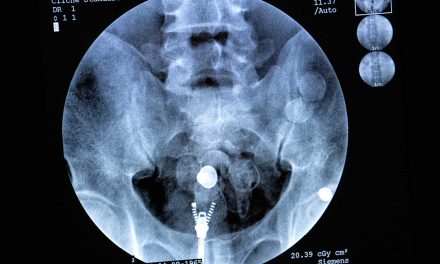During testimony in September 2014 by the British mining multinational Lonmin Plc to the Marikana Commission of Inquiry into the events that led to the August 2012 shooting of mineworkers, commission evidence leader Matthew Chaskalson cross-examined Lonmin Director Mohamed Seedat about why Lonmin Management Services (LMS) had been charging Lonmin Plc’s South African operating subsidiaries, Eastern Platinum Ltd (EPL) and Western Platinum Limited (WPL), management fees since 1999.
Seedat, a vocal defendant of Lonmin, responded positively, and not without trepidation, when he stated: “You couldn’t do a transaction between LMS and Lonmin Plc; they are the same entity.” Notwithstanding LMS’s “legally indivisible” status from Lonmin Plc, the commission found that LMS had transferred R429 million in “management fees” to Lonmin Plc between 2007-2010 even though the Companies and Intellectual Property Commission (CIPC) physical files show that no annual financial statements of LMS in its juridical form as an external company had ever been lodged.
In other words, LMS not only minimised the tax exposure of Lonmin Plc’s subsidiaries in South Africa by increasing their operating expenses – thereby reducing their audited pre-tax profit margins – but also transferred its “management fees” to Lonmin Plc in arms-length transactions out of South Africa, ie., legally speaking within the same company.

Seedat’s testimony highlights an important but under-theorised explanation for aggressive tax planning by Multinational Enterprises (MNEs). Besides showing how vertically integrated mining MNEs, which span the full range of the mining value chain in many countries, often through different group entities, have instrumentalised tax avoidance, the Lonmin scheme reveals two important characteristics of illicit financial flows in the African continent generally. One of these is MNEs’ capture of strategic resources vital to foreign interests; the other is their readiness to exploit loopholes in the tax regime to maximise profits – and one of the principal tactics used to achieve that purpose, the covert use of transfer pricing.
The Organisation for Economic Co-operation and Development (OECD), in its 2013 Base Erosion and Profit Shifting Action Plan, defines transfer pricing as “the process of determining the price for goods, services, or property sold between related parties within an MNE”. In strictly technical terms, if an MNE subsidiary sells products to a parent company or related entity, the price paid for those goods to the subsidiary is a normal business accounting practice. MNEs themselves generally contend that consolidating the provision of services in profit centres located in developed countries is driven primarily by the objective of maximising shareholder value through pooling specialised resources, proximity to customers, trading and shipping centres and/or research facilities.
However, although these tax practices are technically legal, it may be argued that they are ethically questionable. The extreme complexity and mendacity of the evolution of some of these multi-layered MNEs since the early 1980s, when profit centres in Europe and the United States decentralised their corporate structures into standalone subsidiaries in different tax jurisdictions that, in some conduit companies, are just “mailboxes” with no clear business purpose, indicates that they are primarily designed to minimise MNEs’ tax at the consolidated level.
Drawing on overall trends in illicit financial flows out of Africa between 1980 and 2018, a recent Brookings Institute Africa Growth Initiative policy brief explains transfer pricing in a colder light. It diagnoses a severe case of “profit shifting and tax arbitrage”: that is, “the under-pricing of outbound transfers of mainly mineral products from the source of profits in African tax jurisdictions to low tax jurisdictions, and the overpricing of inbound transfers of goods and services from related parties including marketing and financial services, corporate and support services, and tangible and intangible assets”.
Such diagnoses have two key drivers. First, the returns to MNEs of cross-border investments through the most tax-efficient corporate structures, spreading their functions, assets and risks across multiple related entities located in different jurisdictions. Second, the transfer of value-adding mining activities from African countries, where corporate tax rates are less competitive, to low- or no-tax jurisdictions through the manipulation by MNEs of prices of cross-border transactions between related parties.

Findings such as these are now so dramatic that they have prompted tax authorities in several resource-endowed African countries to call into question the long-term growth implications of MNE tax practices in a continent struggling to achieve a tax to GDP ratio of 15% against an average of more than 33.6% for OECD countries since 2000. To put that in perspective, Africa’s mineral endowments have become a magnet for foreign direct investment (FDI) in mineral exploration and mine development, attracting 17% of worldwide mineral exploration between 2013 and 2017. Using trade misinvoicing and net errors and omissions to calculate aspects of illicit financial flows between 1980 and 2018, the Brookings data show that sub-Saharan Africa received nearly $2 trillion in FDI but lost more than $1 trillion in outbound illicit financial flows.
The actual value of trade misinvoicing is hard to track with precision, but the United Nations’ High Level Panel of the Economic Commission for Africa, in a 2014 Progress Report on Illicit Financial Flows, estimated illicit outflows from Africa due to mispricing at $50 billion a year, with the African Development Bank identifying “inefficient taxation of extractive activities and the inability to fight abuses of transfer pricing by multinational enterprises” as a significant cause of tax base erosion in developing countries.
The top four emitters of illicit flows – South Africa, the Democratic Republic of Congo (DRC), Ethiopia and Nigeria – account for more than 50% of total illicit financial flows from Africa (see Table 1). Among the top 10 emitters of illicit flows, nine countries attribute a significant portion of total exports to natural resources: mining products in South Africa, the DRC, Botswana and Zambia, and oil and gas in Nigeria, the Republic of the Congo, Angola, Sudan and Cameroon.
Table 1: Top African emitters of illicit financial flows (IFFs), 1980-2018 (by highest total IFFs)
| Country | IFFs (millions of USD) | IFFs (% of total trade) |
| SA | 441,481 | 15.5 |
| DRC | 165,649 | 20,4 |
| Ethiopia | 84,316 | 33.5 |
| Nigeria | 67,058 | 3.4 |
| Rep of Congo | 55,083 | 23.8 |
| Angola | 45,133 | 4.4 |
| Sudan | 38,666 | 15.1 |
| Botswana | 31,486 | 16.1 |
| Zambia | 27,500 | 11.8 |
| Cameroon | 26,599 | 14.9 |
Source: Africa Growth Initiative Policy Brief, Brookings Institute, 2020
Table 2 shows that the majority of illicit financial flows from Africa between 1980 and 2018 were hosted in Europe, central Asia, and east Asia and the Pacific region. Reflecting the dramatic increase in China-Africa trade between 1980 and 2018, China hosted 16.6% of all estimated illicit flows from sub-Saharan African countries, almost double that of the United States (9.1 %).
Table 2: Illicit financial flows out of Africa, by destination region (1980-2018)
| Destination region | IFFs (millions of USD) | IFFs (% of bilateral trade) |
| East Asia & Pacific | 387,256 | 16.5 |
| Europe & Central Asia | 360.517 | 11.1 |
| North America | 136.304 | 11.2 |
| Middle East & North Africa | 123.680 | 20.7 |
| Latin America & Caribbean | 31.761 | 10.8 |
| South Asia | 8.599 | 1.2 |
Source: Africa Growth Initiative Policy Brief, Brookings Institute, 2020
Against this backdrop, there should be concern among African tax authorities that the dependence of undiversified African economies on FDI in the extractive resource sector will continue to provide material incentives and opportunities for MNEs to abuse transfer pricing that, if not checked, could become self-reinforcing. This is due to several factors, articulated in a 2016 UNCTAD value chain analysis of the extractives sector.
First, few mining companies are fully vertically integrated and frequently export crushed and screened ore, base metals and other concentrates or intermediate products, after limited processing, to related smelters or marketing hubs. In this way, mining MNEs have increasingly entered into a significant number of cross-border transactions for the provision of high-value, specialised services and assets, and/or financing, many of which are conducted with entities within the same MNE group.
Second, the mining value chain – from resource extraction to processing – is globalised and thus perfectly primed for abuse of the arm’s-length principle as the cornerstone of international rules to set pricing between controlled or related-party dealings. In theory, the OECD’s definition of the arms-length principle requires transfer prices to be “as if the parties were independent, operating at arm’s length and engaging in comparable transactions under similar conditions and economic circumstances”. Difficulties, however, frequently arise in determining whether a transaction was priced at arm’s length, where the characteristics of the mineral product transferred to foreign related parties may differ significantly from the product that is ultimately sold to an independent third party or on the open market, and where the transaction involves hard-to-value intangibles for which comparable industry-specific data, knowledge and experience may not be readily available within tax administrations.
Third, transfer pricing methodology easily conflates trade discrepancies resulting from profits generated by MNEs in host African countries with those resulting from misinvoicing between import and export values. According to UNCTAD, “while export values are reported at the point of departure (known as “free on board” or FOB), import values include freight and insurance (CIF)”. The CIF/FOB ratio has long been debated: Because a country’s composition of imports has a significant impact on its ratio, researchers argue that the ratio is not a reliable measure of direct shipping costs, which will result in some estimation error. This is compounded by the fact that the final destination country is not always known at the time of shipping. To illustrate the point, UNCTAD argues that, “if a company ships cargo from Baltimore, Maryland, to Dakar, Senegal, which is later sent to Banjul, Gambia, the cargo is reported as a US export to Senegal and a Gambian import from the US. Senegal does not record either flow”.
It is thus critical that African jurisdictions develop mining regulatory and fiscal regimes that, while attracting FDI, are capable of being administratively enforced, ensuring that mining pays a fair amount of taxes on the profits generated in their countries. Tax authorities need to question whether the profits of mining subsidiaries and overseas related customers and/or service providers match the value actually added by each of them along the mining value chain.
However, that is only half the challenge. Both the OECD Committee on Taxation and Fiscal Policy and the UN Committee of Experts on International Cooperation in Tax Matters have endorsed the arm’s length principle as a core pillar of international taxation. But the practical implications of transfer pricing mean coming to grips with the OECD Model Tax Convention on Income and on Capital (OECD Model Tax Convention), which includes the same compromise between country of source and country of residence as the UN Model Double Taxation Convention between Developed and Developing Countries (UN Model Tax Convention). The OECD BEPS Action Plan rightly states that, in effect, both the UN and OECD tax conventions imply that “the country of source is not entitled to tax income from foreign corporations even when such income originates from business activities in its territory”.
Both models grant countries flexibility in defining MNEs’ country of residence using formal registration, place of management or any similar criterion. It is this flexibility that allows MNEs to move their residence to countries with preferential tax regimes even when they do not have any significant business activities in those countries. It is also this flexibility that sets the basis for profit shifting and tax arbitrage between high and low tax jurisdictions.
What then is an appropriate remedy? A few months after the Marikana commission of inquiry in September 2014, the Davis Tax Committee (DTC), set up by South Africa’s minister of finance to investigate base erosion and profit shifting in the country, attempted to settle the most sensitive issue since the Marikana incident: the implications of harmful tax practices for the future growth and development of the country.
In its second interim report, the DTC recommended harmonising the global tax regime to avoid “a race to the bottom” by competing tax jurisdictions. In its final report, the DTC pointed out that tax haven jurisdictions and harmful preferential tax regimes distort financial and investment flows among countries. And therein lies the rub. If the dynamics of transfer mispricing, profit shifting and base erosion are shaped by substantial differences and emerging imbalances between high tax and low- to no-tax jurisdictions, the only sustainable solution is a global covenant on tax reform.
Malcolm Ray is a research consultant and author of two scholarly books, titled Free Fall: Why South African Universities are in a Race against Time and The Tyranny of Growth: Why Capitalism has Triumphed in the West and Failed in Africa. Malcolm’s subject speciality is economic history. His writing deals directly with themes of power hierarchies, race and gender discrimination, and class inequality. His current work focuses on the shifting dynamics of urban livelihoods, economic growth and power relations that allow for the development of theorisations of the economy and polity more relevant to post-colonial contexts. Malcolm began his career as an anti-apartheid activist during the 1980s and early 90s. He practised journalism for more than a decade before becoming a financial magazine editor in the early 2000s. He was a Senior Fellow in the Faculty of Humanities at the University of Johannesburg and editor of four premier South African and pan-African business and finance magazines.












